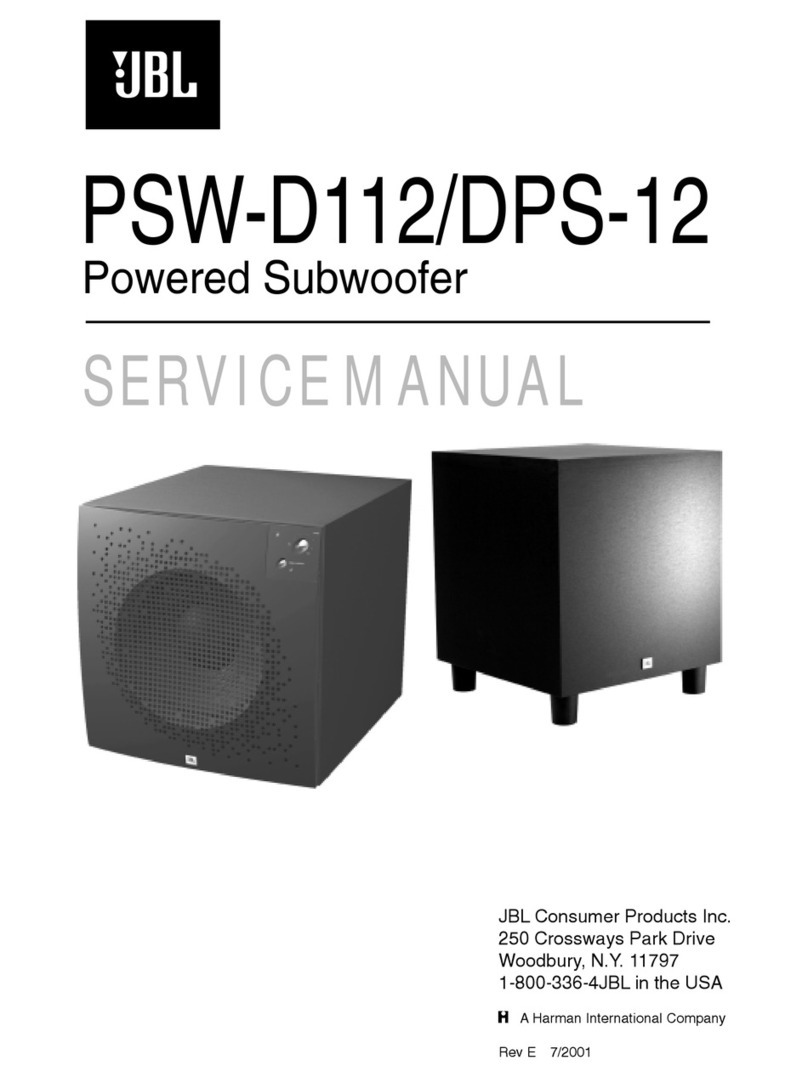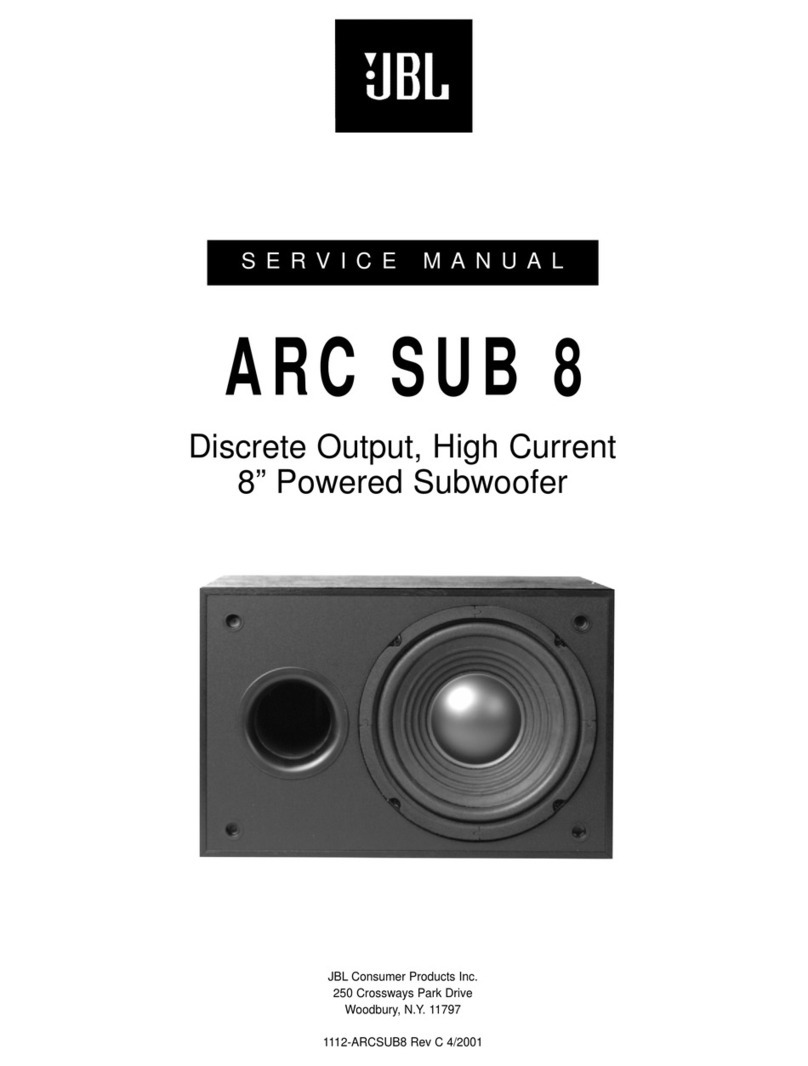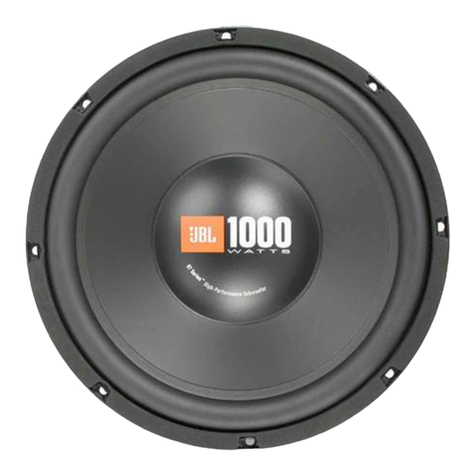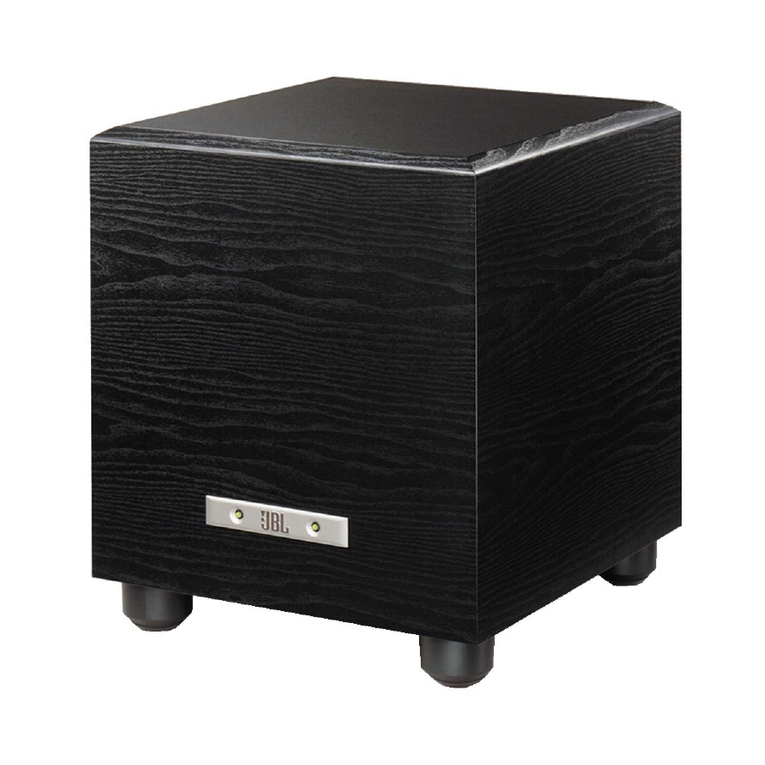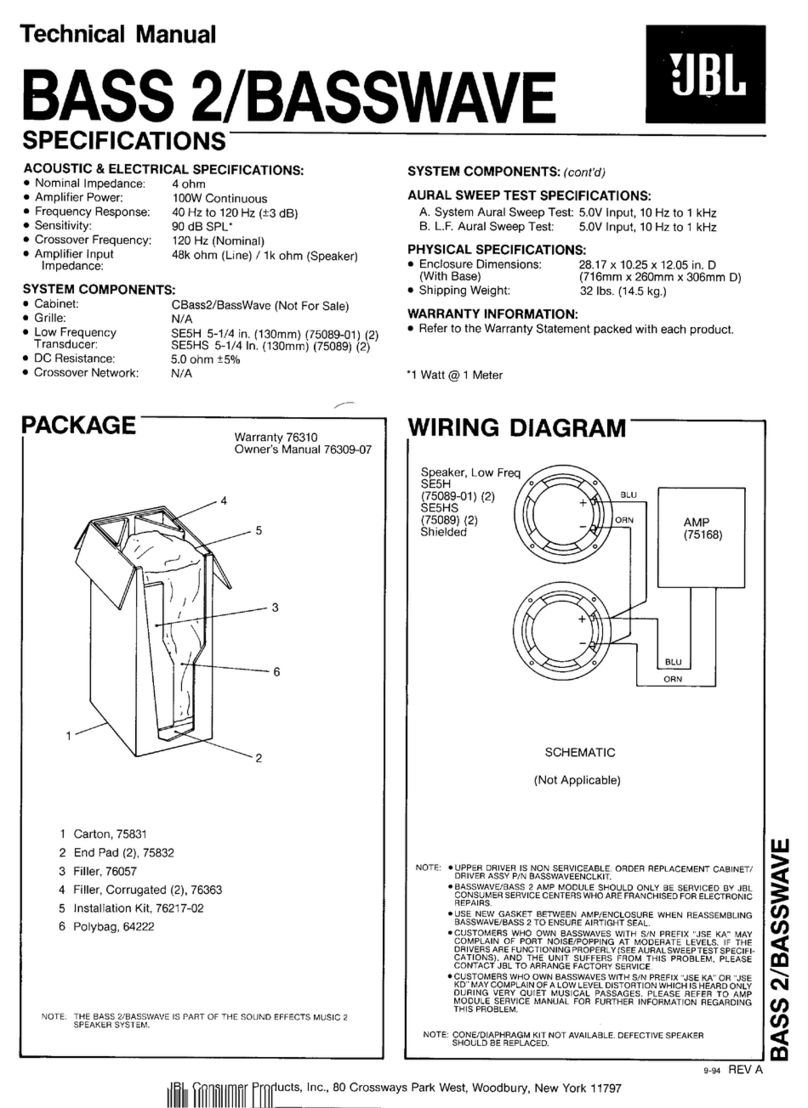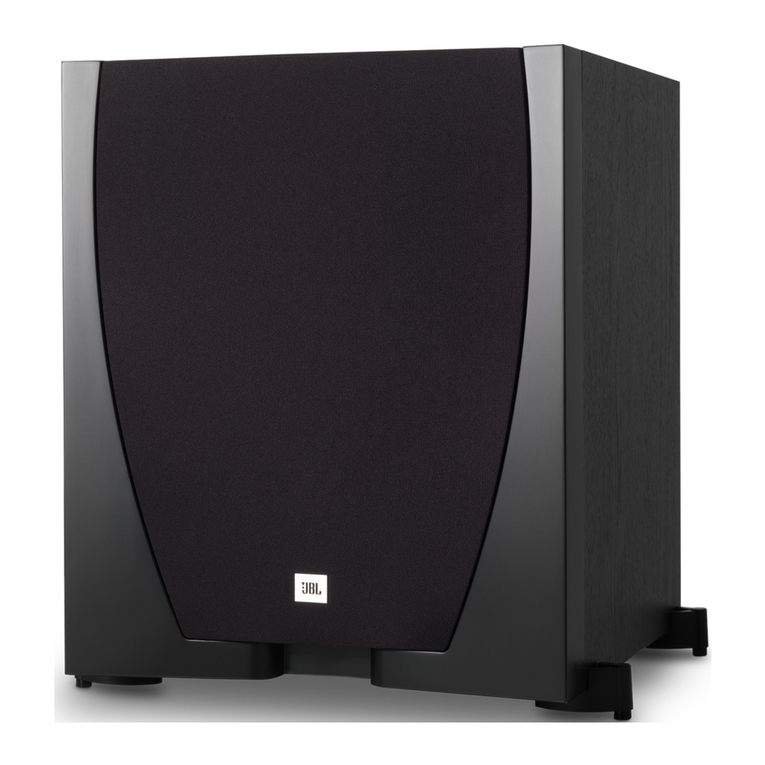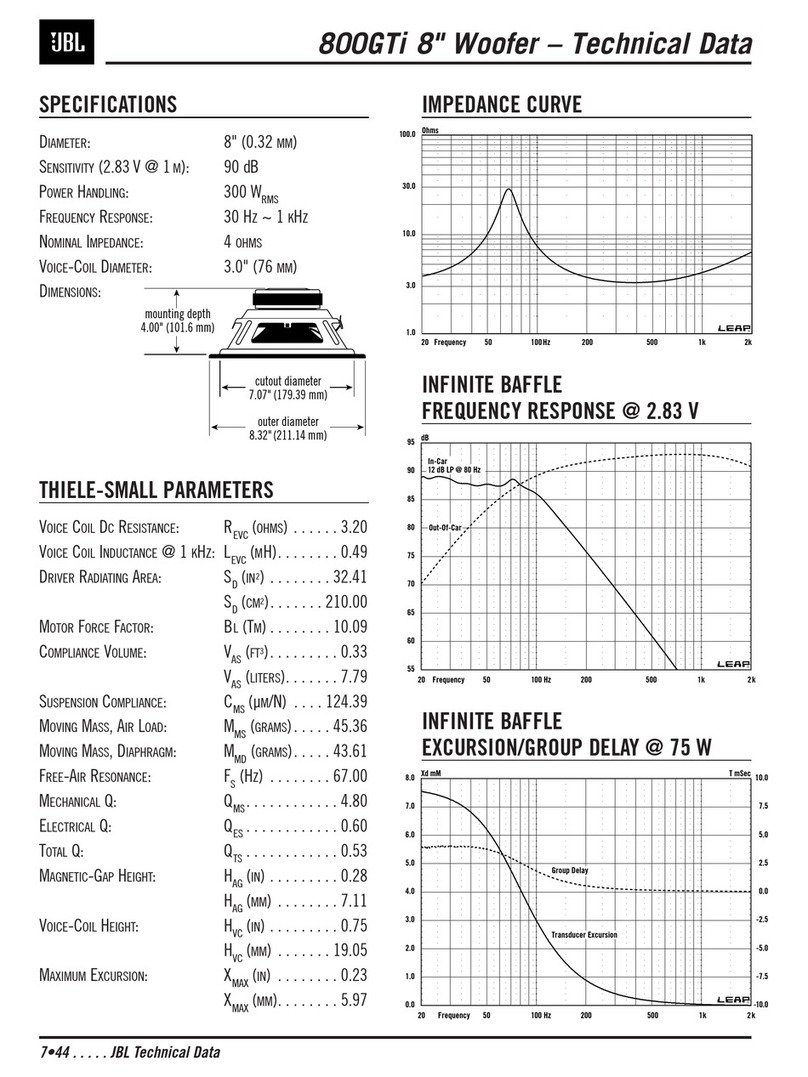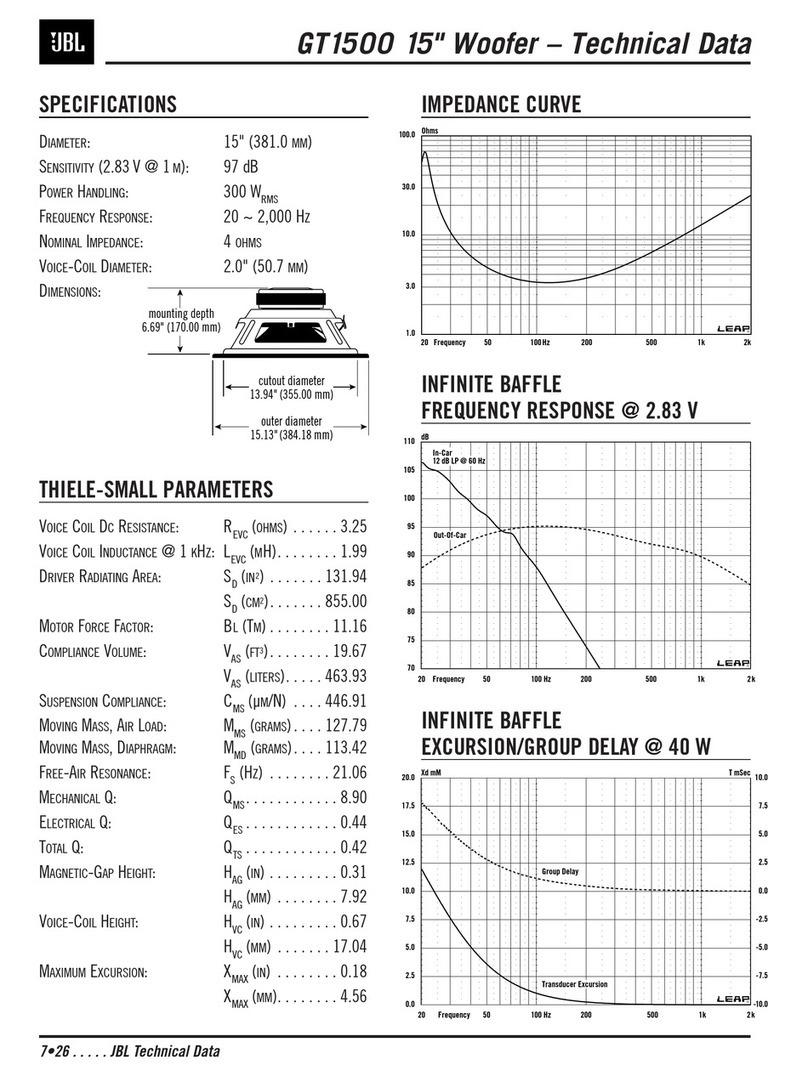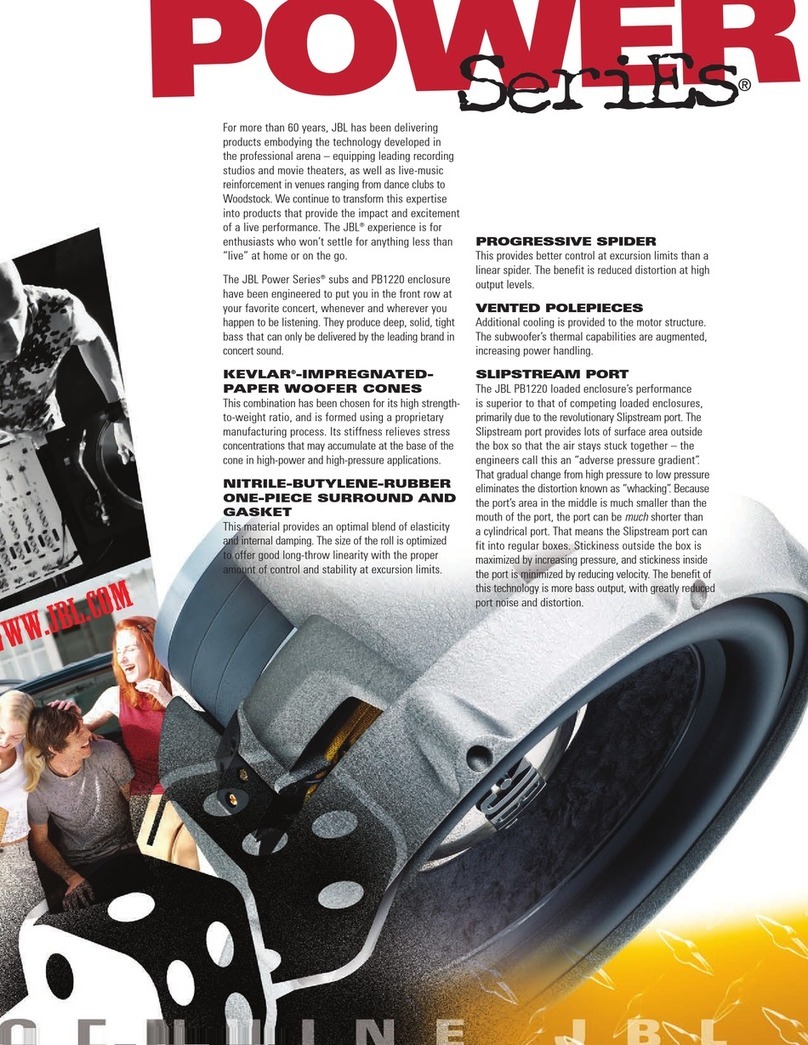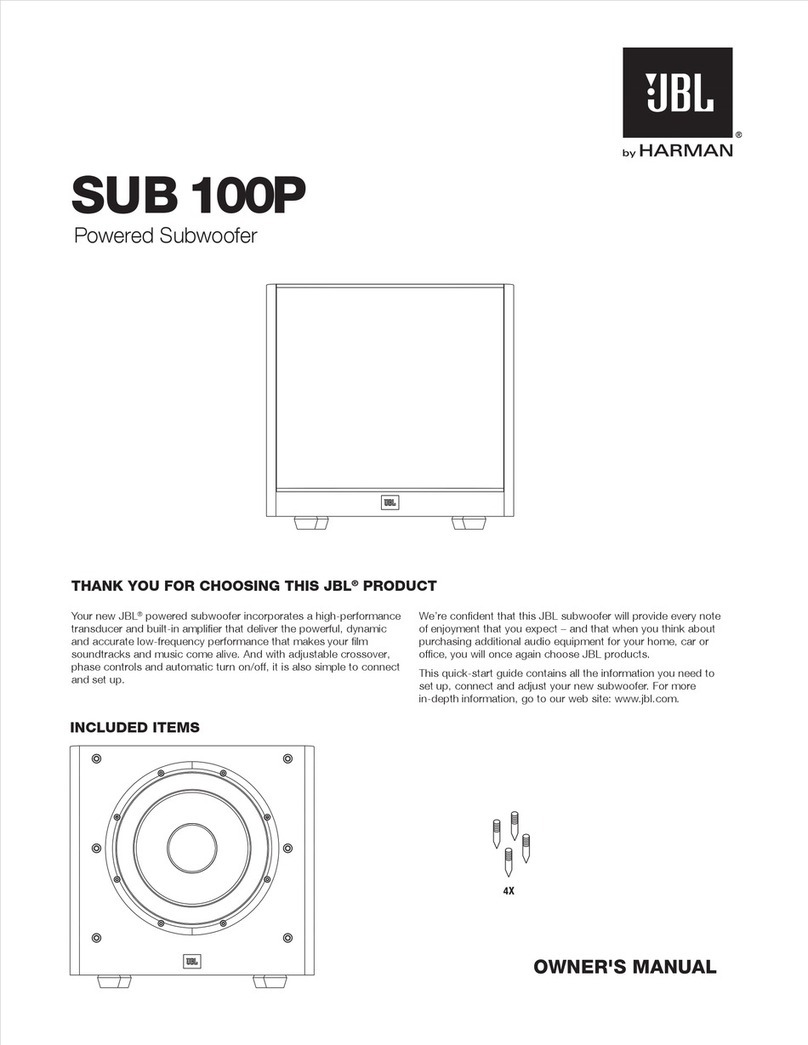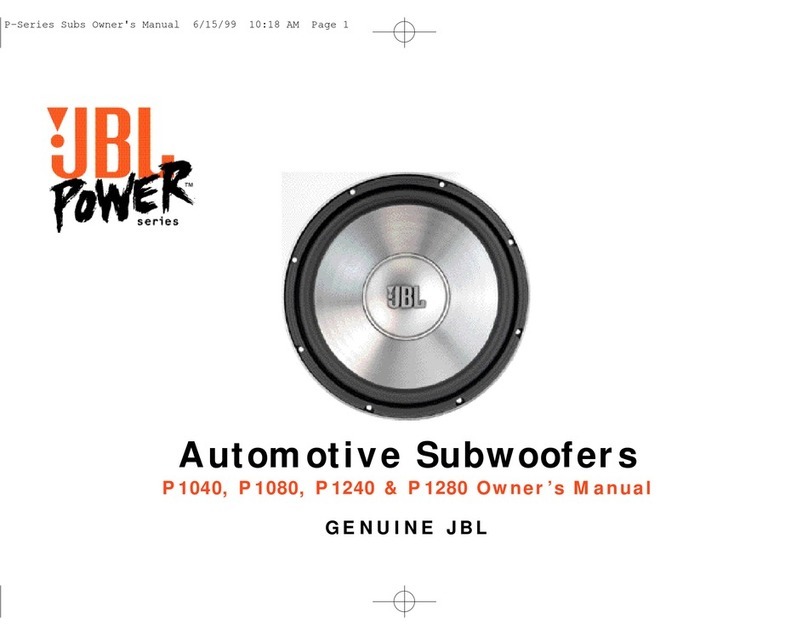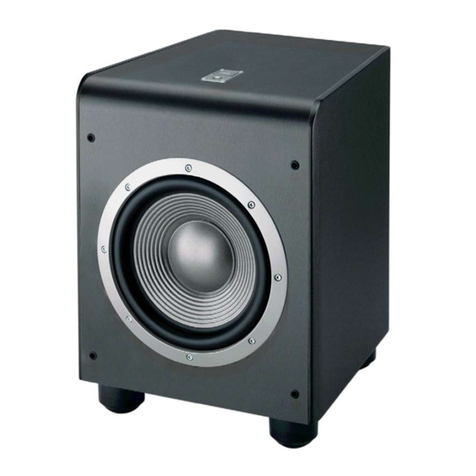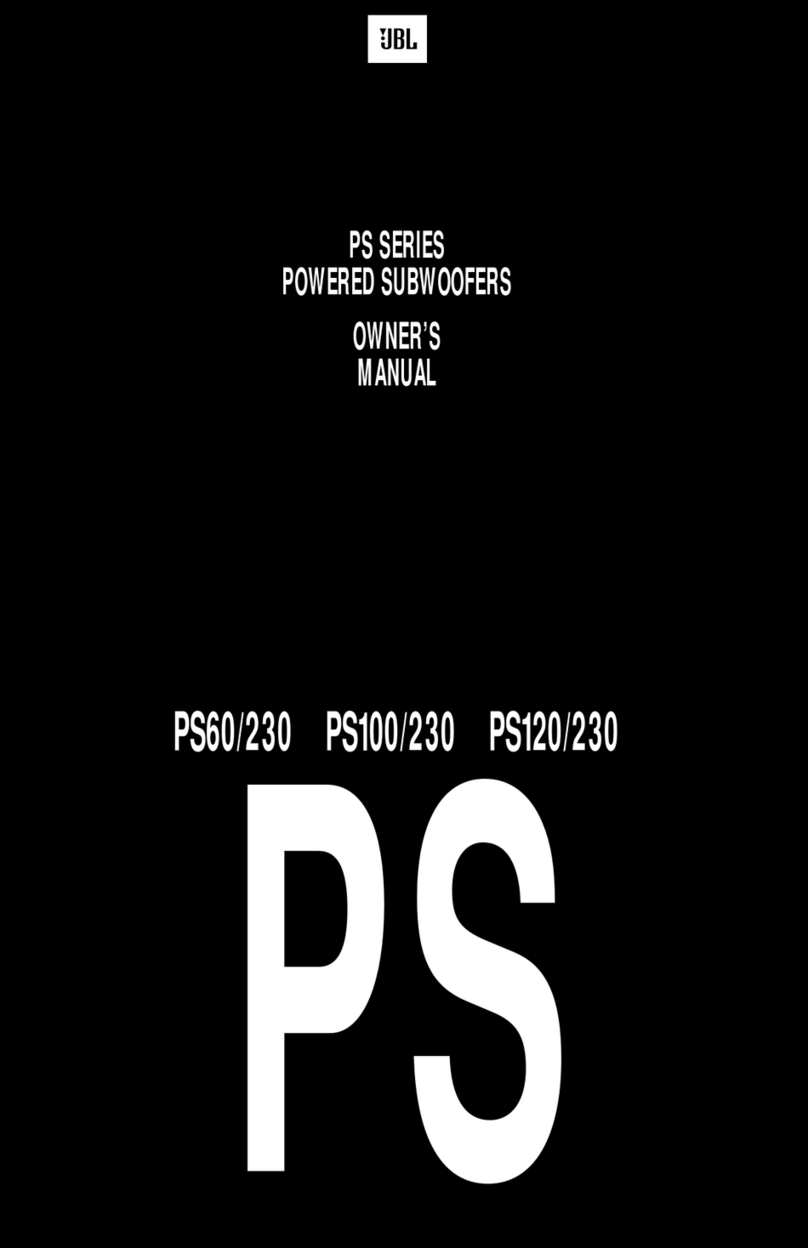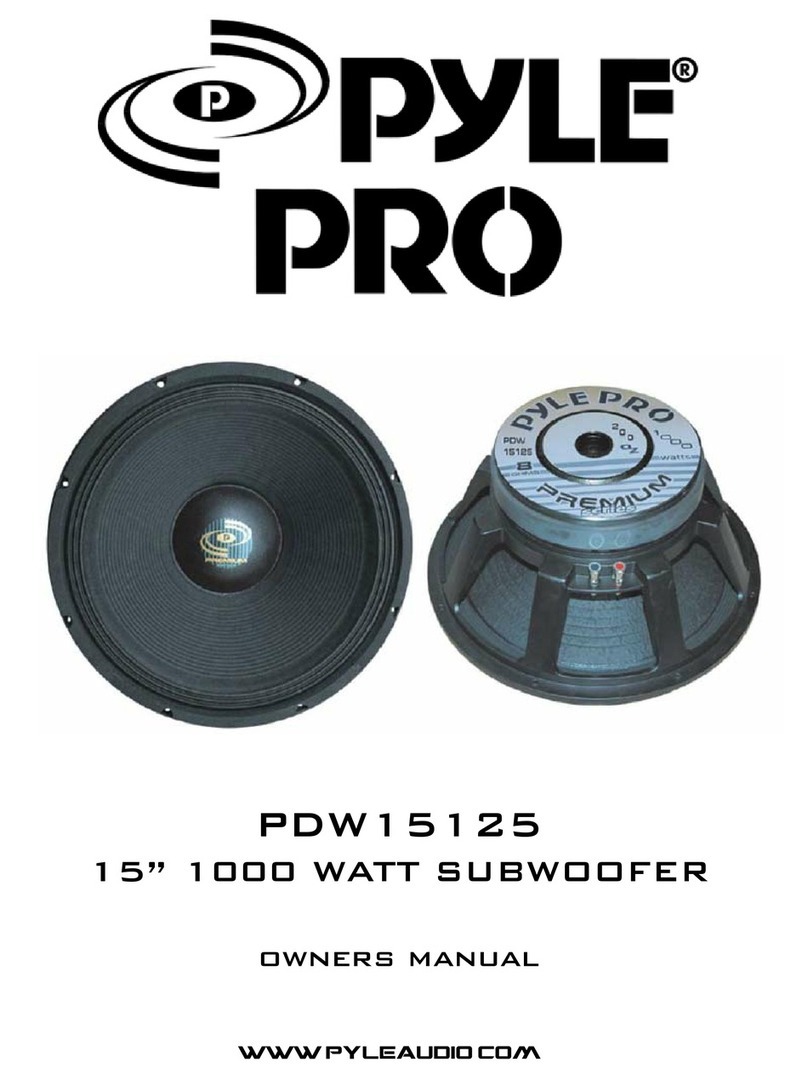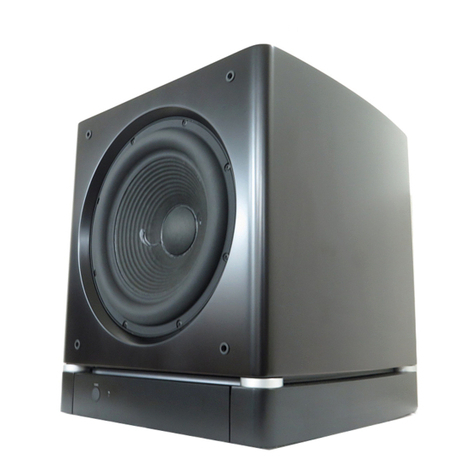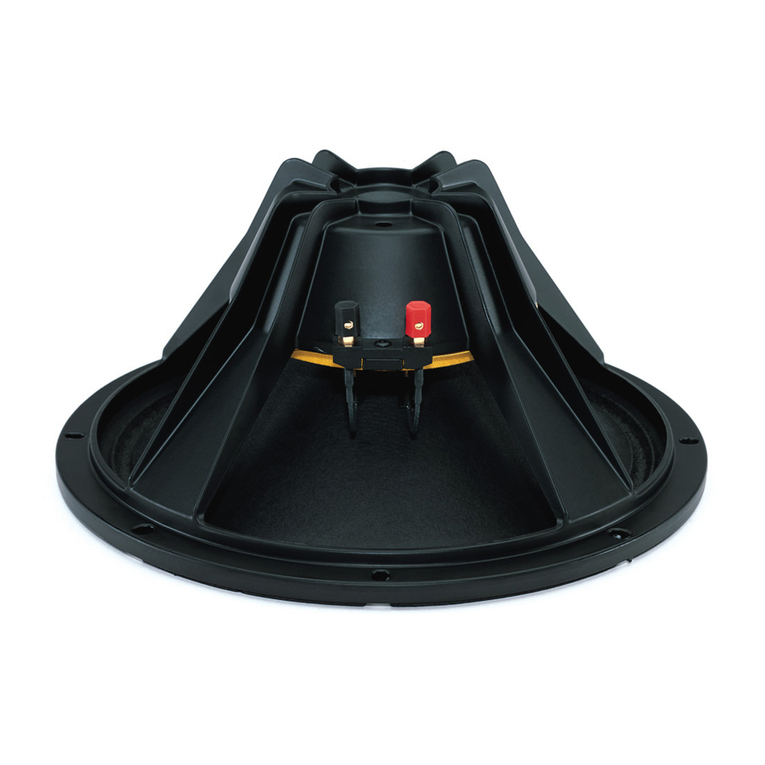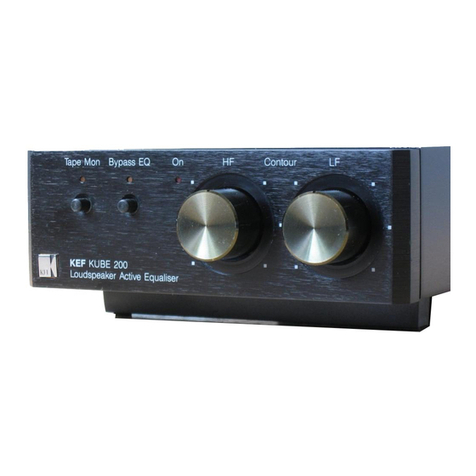
JBL ES150P 225W Powered Sub Amp
LINE VOLTAGE Yes/No Hi/Lo Line Nom. Unit Notes
US 120vac/60Hz Yes 108-132 120 Vrms Normal Operation
EU 230vac/50-60Hz Yes 207-253 230 Vrms Normal operation, MOMS required
Parameter Specification Unit QA Test
Limits Conditions Notes
Amp Section
Type (Class AB, D, other) D n/a n/a
Min. Load Impedance (speaker) 4 Ohms n/a Nominal
AVG System impedance 5.18 Ohms Reference AP Computed based on system
impedance curve Over the BW of 20 to 500Hz
Rated Output Power 225 Watts 210
AVG RMS Dynamic Power 245 Watts 240
Average RMS power, 3/20 Cycles 50 Hz,
Driven 6dB above its input sensitivity ,
average of the first 4 consecutive peaks
THD @ Rated Power 0.5 % 1 22k filter
THD @ 1 Watt 0.2 % 0.3 22k filter
DC Offset 10 mV-DC 30 @ Speaker Outputs
Damping factor >50 DF 20 Measured at amplifier board Measured at the speaker cable. 189 Watts
@ THD < 0.1 % @ 50 Hz
Input Sensitivity
Input Frequency 50 Hz 50 Nominal Freq.
L or R Inputs 11 mVrms ±1dB To 1 Watt Single input driven
LFE mode using L or R inputs 11 mVrms ±1dB To 1 Watt Single input driven, LFE switch ON
System Gain 45 dB Reference Single input driven Normal or LFE mode
Signal to Noise
SNR-A-Weighted 80 dBA 75 relative to 1W A-Weighting filter
SNR-unweighted 65 dBr 60 relative to 1W 22K filter
Residual Noise Floor <2.0 mVrms(max) 2.5
Volume @max, w/ A/P Swept
Bandpass Measurement (Line
freq.+ harmonics) (BW=20 KHz) Line level inputs must be terminated using
1KOHM
Input Impedance
Line Input (L, R,LFE) 10K ohms n/a Nominal
Filters
LP filter Variable 50-150 Hz ± 10 4th Order variable-24 db/Octave
Subsonic filter (HPF) 2nd Order Fixed
Friend circuit Fixed
LFE Low pass 200>LP<500 Hz LFE input driven only
Limiter
THD at Max. Output Power 13 % functional
Drive unit 6dB above the required
level to obtain full power
Approximately 208mV Maximum THD as a result of limiting.
Features --
Volume pot Taper (lin/log) LOG -- functional A Taper
Phase switch 0-180 deg functional
LP Filter defeat switch YES functional Disables LP filter, intended for LFE
LED indicator YES functional Bicolor LED located in top of the cabinet,
RED-Standby, GRN-Active
Input Configuration
Line In (L,R) & LFE YES -- functional Dual RCA jack, for LFE use either L or R inputs
Signal Sensing (ATO)
Auto-Turn-On (yes/no) YES functional
ATO Input test frequency 50 Hz functional
ATO Level LFE Input 2 mV functional Maximum acceptable level.
ATO Turn-on time 5 ms functional Amp connected and AC on, then
input signal applied
Auto Mute/ Turn-OFF Time 5-15 minutes 5-15 T before muting, after signal is
removed Auto turn of time (T) must be 5 > T < 15
Minutes
Power on Delay time 3 sec. 4 After AC Power is applied
ES150P



